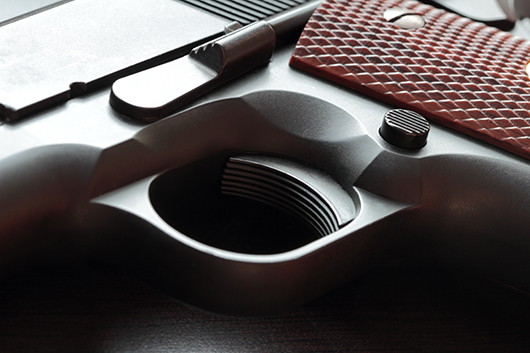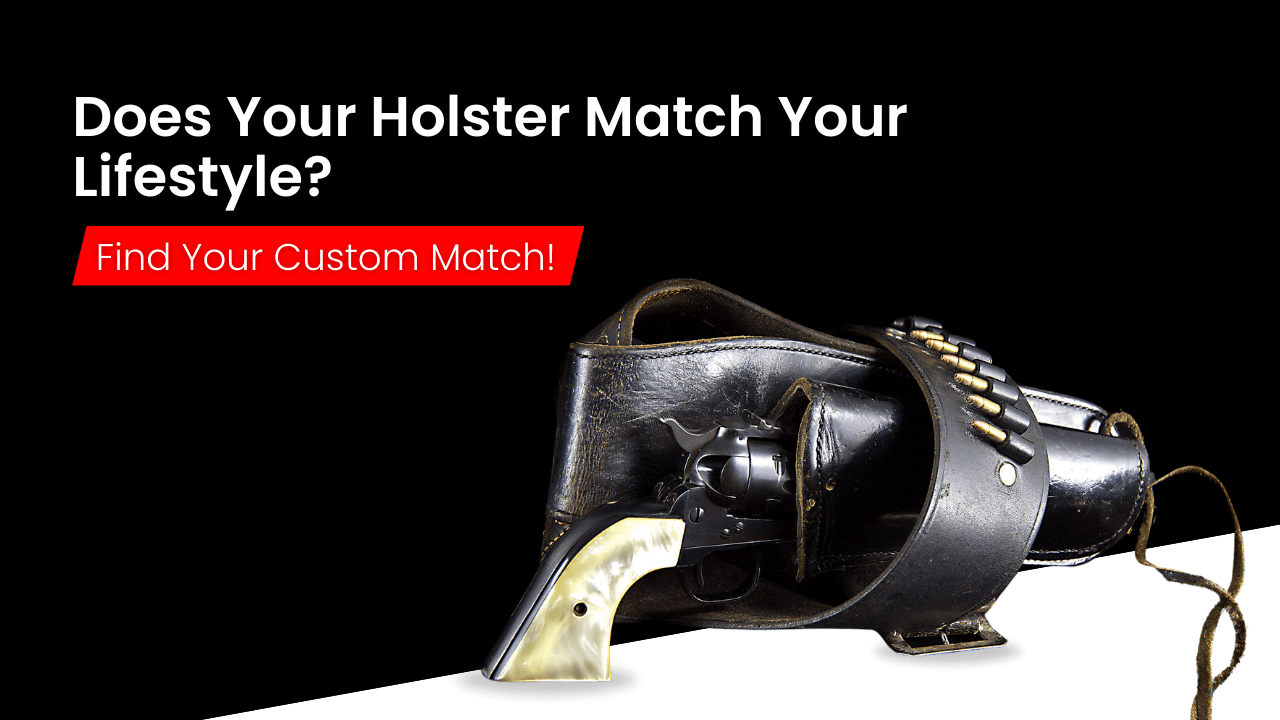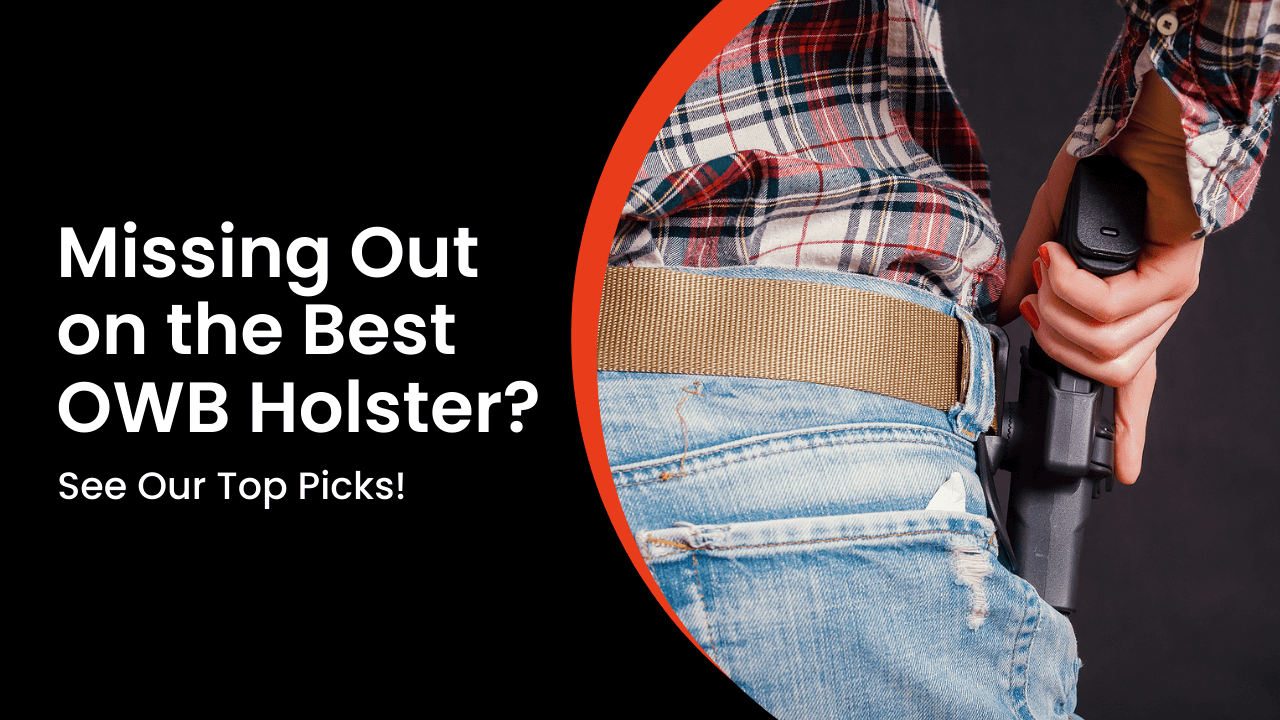Should You Use a Colt 1911 Holster for Concealed Carry?
Feb 21st 2022
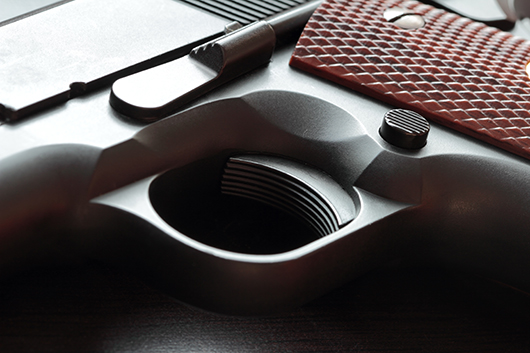
The Colt 1911 was designed by John Moses Browning and adopted by the U.S. Army more than a century ago. During that time, the pistol became one of the most popular semi-automatic pistols in the U.S. and a favorite among civilian shooters for self-defense and competition.
You can attribute the pistol’s longevity to its legendary service history, reputation for functional reliability, customizability, and superb ergonomics.
The Colt 1911
The 1911 is a single-action-only (SAO), semi-automatic, hammer-fired pistol fed from a single-column detachable box magazine. It’s also the first production handgun to fire the .45 ACP cartridge. Since its adoption over 110 years ago, the 1911 platform has spawned multiple variants in calibers ranging from .22 Long Rifle (e.g., the Colt Ace) to 10mm Auto (e.g., the Colt Delta Elite).
However, this pistol platform is available in four frame sizes and several barrel lengths. As a result, when choosing a 1911 for concealed carry, you have a wide variety of options.
Among your choices is size.
If you want a full-size handgun, similar to the weapon that U.S. infantrymen carried for decades, consider the Government Model. However, many shooters opt for a more compact and lightweight variant to reduce printing and increase comfort. The major variants are:
Government Model
In Colt firearms, this is the Mark IV Series 70. This handgun is a classic, albeit on the heavy side (38 ounces in .45 caliber), and is suitable for competitive target shooting and self-defense.
In .45 ACP, this pistol is typically fed from a 7- or 8-round magazine. In 9mm, this often increases to 9. The Governmental Model is defined, in part, by its 5-inch barrel and 8.25-inch height (although this will vary, depending on the rear sight and magazine).
IWB or OWB Holster
The 1911 is a relatively flat handgun, and you can carry this weapon in either an IWB or OWB holster. However, you may want to consider outside-the-waistband carry in a classic belt holster because of its height.
If you choose to carry IWB, a concealment device, such as a claw or wing, can help bring the pistol closer to the body, compensating for the increased bulk of the Government Model.
Commander
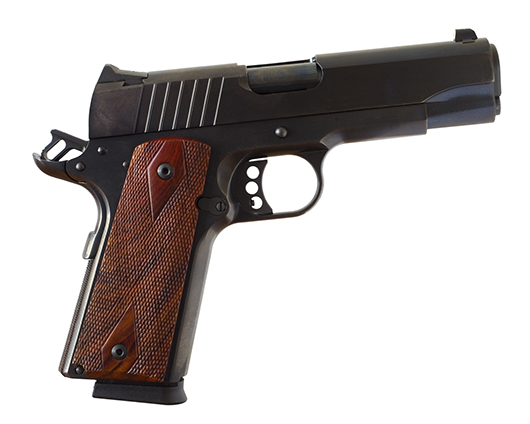
A lightweight, aluminum-framed, compact variant of the Government Model, this pistol features a shorter 4.25-inch barrel. Initially chambered in 9mm, modern variants are available in other calibers and feature steel frames for those who prefer the added weight. Commander-size handguns are more suitable for everyday carry than the Government Model.
IWB
The most compact 1911 pistols, especially those with short frames, are the perfect choice for inside-the-waistband (IWB) holsters. The shorter slide and barrel are also more comfortable in the appendix position.
Officer’s ACP
A subcompact variant, still featuring an aluminum frame, is the most concealable 1911 variant. In .45 caliber, you can expect the recoil to be more stout, which is why some shooters opt for the lighter 9mm.
Concealed Carry Officer
Colt introduced this hybrid design in 1985, combining the Commander’s slide with the more compact frame of the Officer's ACP. This change increases the pistol’s weight, helping to attenuate recoil while reducing the frame’s height to minimize printing for concealed carry.
While this variant is not as prevalent as the others, Colt and Dan Wesson specifically manufacture this model.
There are also long-slide variants for competitive target shooting and hunting. While you can carry these handguns concealed, this may require a full-length holster or a shoulder holster rig.
Accessories
The 1911-pattern handgun typically uses single-stack magazines holding 7-9 rounds of ammunition, depending on caliber. Some shooters decide to wear a magazine pouch or two on their belt because of this limited capacity.
Pancake or Paddle Gun Holsters?
Waistband concealed carry holsters generally use two designs: Pancake and paddle. Regardless of the waistband holster configuration you select, it must meet specific criteria suitable for self-defense. You need a reliable holster you find comfortable, that’s safe to draw from, and retains the weapon securely.
Pancake holster
The pancake is the classic holster design, sandwiching the gun between two pieces of leather or Kydex. Combining a Kydex holster with belt loops or belt clips is one of the most secure options for carrying a 1911.
A pancake holster may be suitable for either concealed or open carry. Duty holsters often use this design because it allows for a more secure attachment to the belt.
Paddle holster
The paddle design enables quick attachment and dismounting for maximum convenience when carrying a weapon. The paddle holster uses a paddle clip to attach to your gun belt. This is a panel that slides behind your belt and uses a series of teeth or claws to grip the underside.
At Incognito Concealment, our IWB and OWB holsters use passive retention, eliminating the need for external fasteners, such as a thumb break.
Why a 1911?
Many gun owners wonder, in a market where there is fierce competition from modern combat handguns, why should you choose an almost 110-year-old design over, say, a Glock?
There are a few reasons:
Metal frame
As reliable and durable as they are, there are still those who prefer metal-framed handguns, steel, or aluminum to ones made from a polymer composite. Some shooters appreciate the strength and additional weight that steel affords, especially regarding recoil control. It feels more substantial in your hand.
Single-action-only (SAO) trigger
The 1911 has a single-action-only trigger, so you must either cock the hammer with your thumb or retract the slide before firing the weapon. This action reduces the trigger's weight and allows for a consistent trigger pull from shot to shot. A 1911’s stock trigger is crisper and smoother than many striker-fired alternatives.
Manual safety
Many handguns today use passive safeties. For those who would prefer the added safety of a lever that you have to flip with your thumb, the 1911 provides the simplest answer. The original design has a manual thumb safety on the left side of the frame only. Newer pistols often have an ambidextrous thumb safety for left-handed shooters.
Classic ergonomics
There’s a lot to be said for comfort, and the 1911, with its classic grip angle, slender single stack magazine, and control placement, points and fires naturally. Some prefer to rest the thumb of their firing hand on the manual safety when firing for increased control. This reduces lateral movement.
Timeless style
Its authentic cosmetics are not important to practical self-defense. But who hasn't contemplated buying a gun because its appearance spoke to their sense of aesthetics? The 1911 exudes style, and its beauty is one of the reasons for its continued popularity.
Calibers
1911 pistols are available in a wide variety of cartridges. In .22 Long Rifle, a 1911-pattern handgun, such as the Walther Arms weapon manufactured for Colt, can enable you to engage in familiarization firing at a fraction of the cost. However, there are superior choices for self-defense than the diminutive .22 rimfire.
.380 ACP
Suppose you're sensitive to recoil or want to carry a subcompact 1911 or a miniature variant such as the Kimber Micro. In that case, many gun owners regard the .380 ACP as the minimum cartridge acceptable for self-defense.
The most common bullet weights are 90 and 95 grains, although lighter and heavier options are also available.
9mm Luger
Firearms manufacturers are chambering an increasing number of 1911-pattern handguns in 9mm Luger. The 9mm round is one of the most popular self-defense options because it offers an excellent balance of mild recoil, reasonable effectiveness, capacity, and moderate cost.
It’s also controllable in subcompact handguns. Common bullet weights are 115, 124, and 147 grains.
.45 ACP
The .45 ACP (Automatic Colt Pistol) cartridge, also called the .45 Auto, delivers what many shooters regard as a high degree of stopping power. Typical bullet weights are 185, 200, and 230 grains. However, while many enthusiasts still consider this round the best of all handgun calibers, it can produce excessive recoil in compact and subcompact handguns, especially aluminum frames.
10mm Auto
Other than the failed Bren Ten, the first handgun to chamber this powerhouse was the Colt Delta Elite in 1987. Many 1911-pattern handguns have been chambered in this caliber since. Full-power 10mm combat loads meet or exceed the performance of .357 Magnum.
If you want to carry a full-size 1911 and don’t mind the increased recoil and expense, the 10mm Auto is a viable self-defense round against two- and four-legged predators. You'd typically find this cartridge loaded with 175-, 180-, and 200-grain bullets.
Final Thoughts
At Incognito Concealment, we’re passionate about concealed carry with a wide variety of firearms, from the classic 1911 platform to the modern Glock series.
Call us at (586) 333-4240, and we’ll walk you through our selection of firearm holsters and magazine carriers to find the perfect combination for your weapon.

